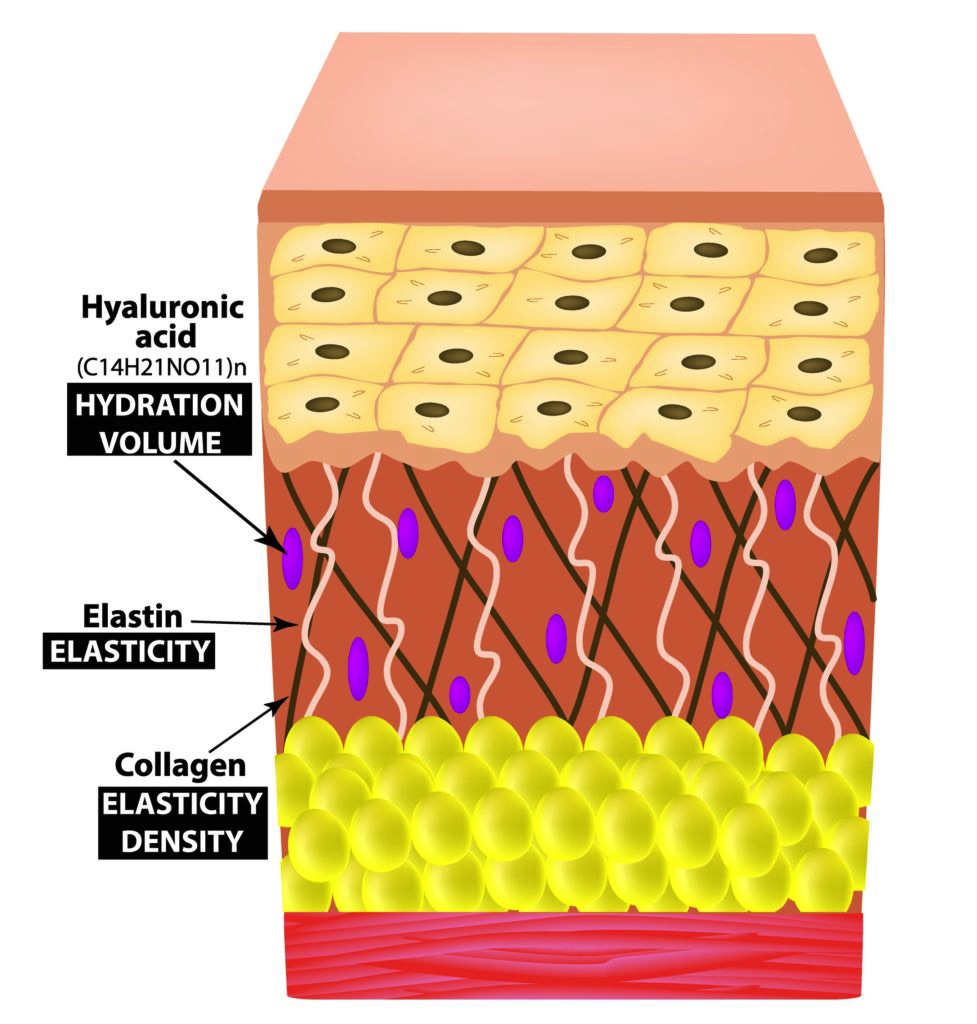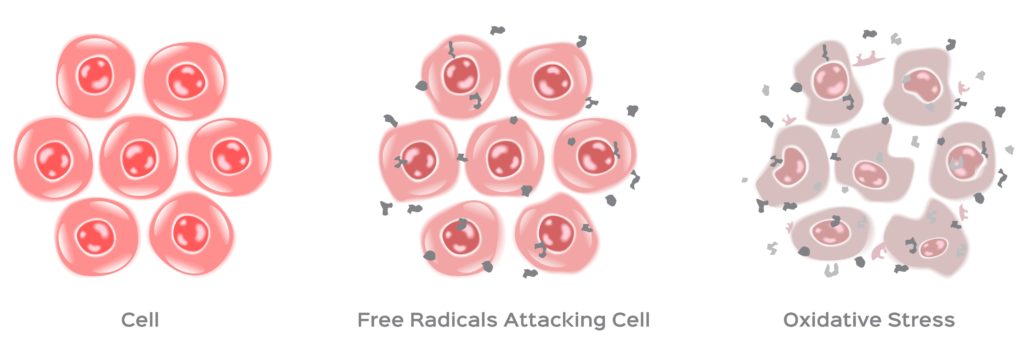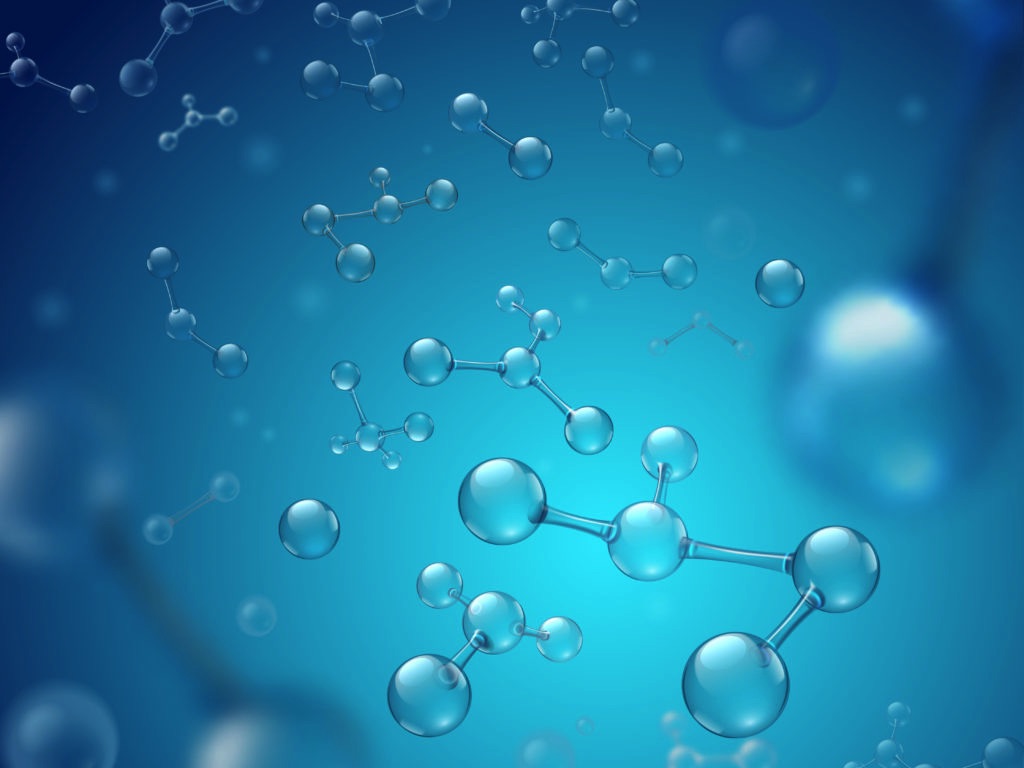Without hyaluronic acid, the skin would be dull, dry, and lifeless. The molecule plays a central role in keeping the skin healthy, influencing hydration, wrinkle appearance, wound healing, and more. Though, as with all good things, it doesn’t last forever. Indeed, the amount found in the skin steadily decreases with age, so our brand-new data demonstrating that AvenaPLex boosts hyaluronic acid levels after just 8 weeks’ use has, naturally, been well received by industry insiders. However, this latest release has also generated a lot of questions: what exactly is hyaluronic acid; why does it decrease with age; and how do oats stimulate its production? In this blog post we’ll provide the answers, along with everything else you need to know about the skin’s most powerful moisture-boosting molecule.
After Something Specific? Find the Answers You’re Looking for…
- What Is Hyaluronic Acid?
- How Does Hyaluronic Acid Benefit the Skin?
- Why Does Hyaluronan Decrease with Age?
- How Do Oat-Derived Ingredients Boost Hyaluronic Acid?
- Why Is It Favourable to Increase Hyaluronic Acid Levels Naturally?
What Is Hyaluronic Acid?
Also known as hyaluronan, hyaluronic acid is a linear glycosaminoglycan – a sugar. It’s a clear, gooey substance which is naturally produced by the body and has a remarkable ability to bind water. You’ll find 50% of the body’s total hyaluronic acid content in the skin, but it’s also abundant in the eyes and connective tissues. As these are all areas that need to remain lubricated for optimal function, it’s little wonder that hyaluronic acid should be present given its moisture-boosting capacity.
The dermis contains the highest concentration of the skin’s hyaluronic acid. It is also detectable in the surrounding layers of the stratum and lower epidermis. Of particular note is the fact that hyaluronic acid is one of the main components of the extracellular matrix alongside collagen and elastin. It is, therefore, an important part of the complex molecular network which provides the structural framework between cells.

How Does Hyaluronic Acid Benefit the Skin?
Hyaluronic acid plays a crucial role in keeping the skin looking and feeling healthy. When levels of the sugar are optimal, the skin appears more youthful and is able to heal faster. Let’s explore some key skin benefits of hyaluronan in more detail:
- MOISTURE BOOSTING | As a humectant, hyaluronic acid is perhaps best for known its ability to bind large amounts of water. It has a virtually unrivalled moisture-retaining capacity, acting like a powerful aqua magnet in the cells. This means it helps to keep the skin soft, radiant, and optimally hydrated.
- ANTI-AGEING | By holding onto moisture in the skin, hyaluronic acid provides a marked plumping effect. This helps to prevent fine lines emerging and reduces the appearance of those already present for a more youthful complexion.
- DAMAGE DEFENDING | Another noteworthy benefit of hyaluronan is that it has proven antioxidant properties. Antioxidants protect the skin from damage caused by free radicals. It can, therefore, be said that hyaluronic acid contributes to the defence against environmental aggressors.
- WOUND HEALING | Last but not least, hyaluronan also supports the skin’s natural healing process. The molecule has been shown to advance cell proliferation with a consequent increase in cell count when added to a dermal fibroblast culture. This results in a faster wound healing process – a particularly beneficial function for aged skin.
A Trending Ingredient
Although produced naturally by the body, hyaluronic acid can also be applied topically when derived from animal or biotech sources. This variation of the moisture-boosting molecule has emerged as a hero beauty ingredient in recent years. Some would say this was to be expected, with moisturising and hydrating claims long the leading functional claims in skin care and a glowing complexion increasingly sought-after. However, few could have anticipated the rate at which the ingredient would gain traction. In 2020 alone, hyaluronic acid featured in just shy of 15% of beauty launches – a staggering 50% more than in 2017. It has also been branded one of today’s ‘most in-demand’ ingredients, according to a recent survey.
It’s not just in topical beauty that hyaluronic acid is making a splash. Indeed, there is growing demand to see the ingredient in edible beauty products, where it’s tipped to become a go-to for ‘inner hydration’. A similar picture is also emerging across other consumer categories. In food and drink, for example, hyaluronic acid is expected to follow the path of collagen in becoming a standard functional addition to recipes. Coca-Cola Japan has emerged as a mainstream pioneer in this space, releasing a hyaluronic acid drink ‘to moisturise the skin from within’.

Why Does Hyaluronan Decrease with Age?
The skin’s hyaluronic acid content physiologically decreases with age. Less of it is produced and the substance becomes far weaker in its ability to keep the skin healthy. This phenomenon is accelerated by several factors which either directly or indirectly impact the quantity and quality of hyaluronan in the skin. Direct factors are those which accelerate the molecule’s deterioration and directly impede its production. On the list of offenders are smoking, sleep deprivation, and UVB rays – the type of radiation responsible for sunburn. Conversely, indirect factors are those which promote the production of free radicals known to damage the weakened hyaluronan. This includes infrared radiation, pollution, and extreme temperatures. UVA rays, those which deeply penetrate the skin and destroy the cells, are also known to increase levels of free radicals.
How Do Oat-Derived Ingredients Boost Hyaluronic Acid?
Specific enzymes in the skin known as hyaluronan synthases (HAS) are responsible for hyaluronic acid production. These are membrane-bound enzymes which synthesise hyaluronan on the inner surface of the plasma membrane. Once this process is complete, they extrude the sugar through pore-like structures into the extracellular space. There are three mammalian enzymes in total – HAS1, HAS2, and HAS3 – and each produces molecular chains of a different length.
AvenaPLex, our 100% oat-derived active, up-regulates the third hyaluronan-producing enzyme, HAS3. Our 2017 Gene Stimulation study first provided evidence of this, though the extent to which it affects the skin’s concentration of the moisture-boosting molecule has only recently been revealed. Indeed, thanks to brand-new data we can now confirm that AvenaPLex boosts levels of hyaluronic acid in aged skin by 14%. This is despite the fact that there’s no trace of the substance in AvenaPLex. The effect is wholly attributable to AvenaPLex’s stimulation of the HAS3 enzyme – a remarkable feat for a natural ingredient.
New Data Shows AvenaPLex Stimulates the Skin’s Hyaluronic Acid Production
Why Is It Favourable to Increase Hyaluronic Acid Levels Naturally?
As evidenced above, some powerful plant extracts – such as AvenaPLex – enhance the skin’s natural hyaluronan production. This offers numerous advantages to the consumer, formulator, and the skin when compared to the topical application of hyaluronic acid:
- MINIMALIST FORMULAS | Consumers are using fewer products and actively seeking out those with shorter ingredient lists. With natural actives like AvenaPLex, consumers can enjoy the moisture-boosting properties of hyaluronan and a wealth of other benefits all in one.
- COST REDUCTION | It’s no secret that beauty brands strive for value for money in the formulation process. It costs considerably less to use AvenaPLex than it does hyaluronic acid (based on a like-for-like comparison) yet the active offers amplified anti-ageing benefit.
- 100% NATURAL | It’s not possible to obtain hyaluronan from nature without biotechnological intervention (unless from animal sources). AvenaPLex, on the other hand, is simply a powerful polar lipid fraction of oat – a crop with a rich 4,000-year history in cosmetics.
Hyaluronan does more than its fair share of work to keep the skin healthy. However, several factors cause levels to drop with age, resulting in a biotech variation becoming one of today’s hottest ingredients. Enter AvenaPLex: a game-changing alternative solution. By combining the power of oat with cutting-edge scientific research, we’ve proven that the powerhouse active up-regulates HAS3. This means it’s now possible to develop multi-functional beauty products which offer a natural boost to hyaluronic acid levels. What more could the modern beauty consumer want?
Want to Save This Guide for Later?



